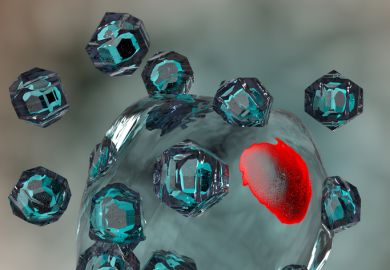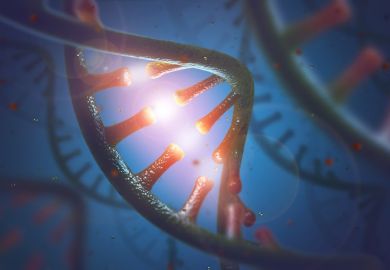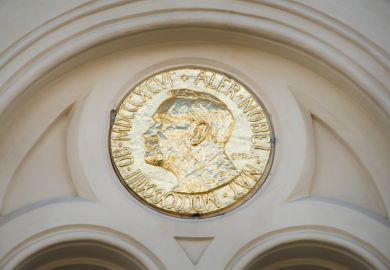Single-volume works that in about 1,000 pages provide a broad introduction to organic chemistry with a bio-organic component have traditionally formed the core texts for chemistry majors and pre-med students in North American universities. Over the years a co-evolution of the courses and textbooks has resulted in an accepted style of coverage of a reasonably well-defined area. The three textbooks under review here are products of this tradition, but in each case there is an emphasis on providing an understanding of the subject rather than merely presenting the facts. All three have much to offer, and chemistry undergraduates in British universities should gain a solid grounding in the fundamentals from any one of them.
The books by Paula Bruice, now in its third edition, and John McMurry, now in its fifth, follow broadly similar lines. Both cover the usual themes of structure and bonding, stereochemistry, fundamental reaction mechanisms, carbonyl chemistry, bio-organic chemistry and other special topics. The chapters in Bruice on organic synthesis and the organic chemistry of drugs stand out. McMurry makes finer divisions of the functional groups and the core material is accordingly less fragmented, the overall organisation being generally the more traditional and, for example, carbonyl chemistry is presented in the following order: 1,2-additions to aldehydes and ketones then addition-elimination processes of carboxylic acid derivatives. A significant difference is in the treatment of functional group preparations: although McMurry discusses this aspect in the usual place (alongside functional group reactivity), Bruice chooses not to but instead provides an index in the appendices to reactions in terms of the functional groups prepared. Actually, the appendices in both books are very helpful, comprising such data as pKa values, spectroscopic correlation tables, functional group information and detailed glossaries of key terms. The chapters on bio-organic chemistry are good in both cases, with excellent graphics and a clear explanation of all the major points, but Bruice definitely has the edge here.
Numerous teaching tips and worked problems punctuate the text at appropriate points to reinforce the material, and the end-of-chapter questions act both as a check on progress and to introduce more advanced material. To further maintain students' interest, the texts are interspersed with numerous asides that contain more general material. Bruice develops this theme more effectively - there are almost 100 snippets on a diverse range of topics including, for example, decaffeinated coffee and the cancer scare, peyote cults, blood alcohol content and sickle-cell anaemia. Bruice's discussion of the historical development of organic chemistry and the personalities involved is also more extensive.
An obvious feature of both books is their excellent use of full-colour graphics to add a sense of reality to chemists' favoured but abstract zig-zag structural formulae. The many representations of molecules by electrostatic potential surfaces give an immediate visual indicator of reactivity. The transparent surfaces in McMurry are especially useful in this regard as the embedded molecular skeletons help with orientation, and their value is further increased by the inclusion of an article by Alan Shusterman and Warren Hehre on the origin and interpretation of these molecular graphics. McMurry develops this theme of molecular visualisation more extensively, each chapter ending with a molecular modelling section that relates to the accompanying CD that includes SpartanView - for viewing reaction animations and manipulating a large library of molecular species - and SpartanBuild, with which students can assemble their own structures and minimise them with a molecular mechanics algorithm. This CD and the one that accompanies Bruice form just a small part of a large body of ancillary material that could, in principle, allow study almost independently of a tutor. For example, associated websites provide further practice problems with worked answers, molecular visualisation aids and links to other chemistry-related websites.
Overall, both Bruice and McMurry have produced engaging, readable texts that describe core organic and bio-organic chemistry in an attractive and stimulating way. The choice of which to buy comes down to individual preferences for style and emphasis.
Unlike the other two, Maitland Jones's book, which is a second edition, lacks a large support structure - teaching aids, websites and so on - except for the accompanying CD that, however, includes a superb set of animated reactions. Each reaction can be tracked along an animated energy profile as the reaction proceeds and transition states and intermediates are easily identifiable. This can be most revealing, and the ability to view the frontier molecular orbitals as bonds form and break adds a new dimension to reactions that students should find fascinating.
The book itself takes a personal, somewhat philosophical approach that is characterised by an emphasis on preparing the student to ask questions at every stage; new material is rarely presented as irrefutable fact but is scrutinised, whenever the opportunity arises, before arguments are presented either to support a first-guess model or to necessitate a modification. The sections on hybridisation, the pKa of alcohols and carboxylic acids, and the evidence for non-classical carbocations are good examples. Issues are not side-stepped here, nor are subjects categorised as too difficult to discuss. Instead, there is an attempt to instil a way of thinking about organic chemistry that should allow students to approach the more technical aspects of the subject with relative ease. Indeed, the coverage certainly does move into areas that could be classified as "advanced", but because the text is written in a fluid, direct style, punctuated by flashes of humour, interesting quotes, evocative images - "of the bearded geezer slaving over the boiling retort" - and personal anecdotes, the reader is kept engaged and involved throughout. As with the other books, the presentation is excellent with appropriate (limited) use of colour for emphasis, although there is a lack of photographic material that in the books by Bruice and McMurry supports the text effectively. Strong points are the treatment of stereochemistry - which includes discussions of chirality in molecules devoid of a stereogenic carbon, and the physical basis for optical rotation - and the examples of bio-organic systems towards the end of each chapter.
The book allocates little space to the systematic coverage of bio-organic molecules, and there is none of the personality profiles and besides that, particularly in Bruice, add some colour to the subject. Furthermore, Jones's open admission that organic chemistry is dynamic and evolving may well be stimulating for motivated students but could be off-putting for those who prefer certainties. Overall, however, these are minor criticisms of an excellent book that even experienced chemists will enjoy and learn from.
Jeremy Robertson is lecturer in organic chemistry, University of Oxford.
Organic Chemistry
Author - John McMurry
ISBN - 0 534 364 5
Publisher - Brooks/Cole
Price - £31.00
Pages - 1,284
Register to continue
Why register?
- Registration is free and only takes a moment
- Once registered, you can read 3 articles a month
- Sign up for our newsletter
Subscribe
Or subscribe for unlimited access to:
- Unlimited access to news, views, insights & reviews
- Digital editions
- Digital access to THE’s university and college rankings analysis
Already registered or a current subscriber? Login



